* Please note this list has how been superseded by the one on the Best Albums of the Years page *
The lists reduce the vastness into controllable sizes, into the size of things that can fit into our mind, where they can expand again to the size of everything. The list is the way of fitting everything in one place at one time, so that we can take it with us, so that we can fit it all inside a microchip, a chip we can then fit inside our soul. … The list is a code for everything we are, the list is a diagram, sometimes extremely slight and incomplete, sometimes unbelievably deep and complete, of eternity.
(Paul Morley, Words and Music)
Here we go, then, with the absolute pinnacle of this year’s albums, every one of them essential listening.
20 | Scott Walker – Bish Bosch
 One of the most anticipated releases of the year, Bish Bosch is considerably more indulgent than Walker’s 2006 epic The Drift. Although that leaves some of the songs (and the album as a whole) feeling a little lacking in unity, the compulsion of Walker’s rhapsodic reveries is simply irresistible. It’s gratifying that the clichés and stereotypical summaries that have encased Walker for decades are subsiding, and he can finally be acknowledged for what he is: the greatest musical poet of our age.
One of the most anticipated releases of the year, Bish Bosch is considerably more indulgent than Walker’s 2006 epic The Drift. Although that leaves some of the songs (and the album as a whole) feeling a little lacking in unity, the compulsion of Walker’s rhapsodic reveries is simply irresistible. It’s gratifying that the clichés and stereotypical summaries that have encased Walker for decades are subsiding, and he can finally be acknowledged for what he is: the greatest musical poet of our age.
[4AD (US) | Amazon (UK)]
19| Gareth Davis & Frances-Marie Uitti – Gramercy
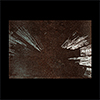 Fragile, hesitant, barely emerging from the shadows, Davis and Uitti’s collaborative work feels like the long-forgotten remnants of a tragic folk music. The cello and clarinet fluctuate between freedom and co-dependence, regularly settling into lengthy episodes bordering on stasis. Occasional moments of urgency are rare exceptions in music that more often lies at the threshold of utterance. It’s unusual to hear beauty and melancholy intermingled with such sublimity as this.
Fragile, hesitant, barely emerging from the shadows, Davis and Uitti’s collaborative work feels like the long-forgotten remnants of a tragic folk music. The cello and clarinet fluctuate between freedom and co-dependence, regularly settling into lengthy episodes bordering on stasis. Occasional moments of urgency are rare exceptions in music that more often lies at the threshold of utterance. It’s unusual to hear beauty and melancholy intermingled with such sublimity as this.
[Miasmah | Boomkat | Soundcloud]
18| Ben Lukas Boysen – Restive (Original Motion Picture Soundtrack)
 In soundtrack mode, Boysen eschews the beat-strewn language of his Hecq persona, expanding on the ambient mindset that led to Night Falls and the ‘Hypnos’ trilogy on Steeltongued. The film’s title neatly encapsulates the tone of the music, made to feel as though at arm’s length. Its wistfulness makes for a jarring juxtaposition with the deeply troubling air of menace that acts as a fundamental. Working primarily with texture rather than the conventions of pitch and melody, Boysen’s score is a stunning rethinking of what a movie soundtrack can be.
In soundtrack mode, Boysen eschews the beat-strewn language of his Hecq persona, expanding on the ambient mindset that led to Night Falls and the ‘Hypnos’ trilogy on Steeltongued. The film’s title neatly encapsulates the tone of the music, made to feel as though at arm’s length. Its wistfulness makes for a jarring juxtaposition with the deeply troubling air of menace that acts as a fundamental. Working primarily with texture rather than the conventions of pitch and melody, Boysen’s score is a stunning rethinking of what a movie soundtrack can be.
[Ant-Zen | Hymen]
17| David Byrne & St. Vincent – Love This Giant
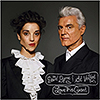 It was always a mouth-watering proposition, this collaboration, and making the bedrock of Love This Giant a brass ensemble set the seal on this being one of the most striking song cycles of the year. It never strays too far from maintaining a clearly-defined, upbeat profile (unavoidable echoes of Talking Heads), providing an accessible counterpoint to the songs’ more leftfield leanings. David Byrne and Annie Clark take turns to predominate, the music undulating through an assortment of funk and lounge throwbacks founded upon irregularly-shaped gravelly beats. Heady stuff.
It was always a mouth-watering proposition, this collaboration, and making the bedrock of Love This Giant a brass ensemble set the seal on this being one of the most striking song cycles of the year. It never strays too far from maintaining a clearly-defined, upbeat profile (unavoidable echoes of Talking Heads), providing an accessible counterpoint to the songs’ more leftfield leanings. David Byrne and Annie Clark take turns to predominate, the music undulating through an assortment of funk and lounge throwbacks founded upon irregularly-shaped gravelly beats. Heady stuff.
[Amazon]
16| Sarah Blasko – I Awake
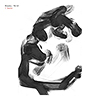 One of the finest female vocalists active today, Blasko has tapped into a new strain of delicacy on this, her fourth studio album. The songs frequently turn inward, communing intimate thoughts, Blasko’s wondrous voice almost quivering apart. The symphony orchestra accompaniment ensures the fabric doesn’t tear, however, and in turn this injects a level of confidence into the music, gently but firmly reinforcing it. It’s by far her best work to date, lyricism of the highest order.
One of the finest female vocalists active today, Blasko has tapped into a new strain of delicacy on this, her fourth studio album. The songs frequently turn inward, communing intimate thoughts, Blasko’s wondrous voice almost quivering apart. The symphony orchestra accompaniment ensures the fabric doesn’t tear, however, and in turn this injects a level of confidence into the music, gently but firmly reinforcing it. It’s by far her best work to date, lyricism of the highest order.
[Sarah Blasko | Dew Process]
15| Chubby Wolf – Seasick
 The legacy of Danielle Baquet-Long, who died in 2009, is considerably enriched by this substantial single-track release. It shows a rather different side to her musical outlook, plumbing the depths of dark ambience, embellished with drones and glimpses of field recordings. Like all her work, the piece illustrates Baquet-Long’s innate compositional patience, allowing sounds time to establish and identify (or at least define) themselves, in no hurry to develop them or move on. Her understanding of the long-term implications of ambient music is considerable, and Seasick consolidates her position as the creator of some of the very best ambient music of our time.
The legacy of Danielle Baquet-Long, who died in 2009, is considerably enriched by this substantial single-track release. It shows a rather different side to her musical outlook, plumbing the depths of dark ambience, embellished with drones and glimpses of field recordings. Like all her work, the piece illustrates Baquet-Long’s innate compositional patience, allowing sounds time to establish and identify (or at least define) themselves, in no hurry to develop them or move on. Her understanding of the long-term implications of ambient music is considerable, and Seasick consolidates her position as the creator of some of the very best ambient music of our time.
[Mystery Sea]
14| Helm – Impossible Symmetry
 Luke Younger’s latest release is an exciting dose of abstract electronics, badly needed in a year that’s seen a paucity of this kind of thing. There’s a barely suppressed ritualism to several of the tracks (‘Miniatures’, ‘Arcane Matters’), complexes of noise and drone that are layered into solemn sound offerings, garnished with bells. Elsewhere the electronics veer between mischievous torrents and restrained burblings, establishing a dark cluster of atmospheres with states of flux informed by Younger’s use of live improvised materials.
Luke Younger’s latest release is an exciting dose of abstract electronics, badly needed in a year that’s seen a paucity of this kind of thing. There’s a barely suppressed ritualism to several of the tracks (‘Miniatures’, ‘Arcane Matters’), complexes of noise and drone that are layered into solemn sound offerings, garnished with bells. Elsewhere the electronics veer between mischievous torrents and restrained burblings, establishing a dark cluster of atmospheres with states of flux informed by Younger’s use of live improvised materials.
[Boomkat]
13 | Claire Chase – Terrestre
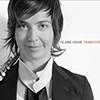 Most recent CDs of contemporary flute music focus on unaccompanied works, so this disc, featuring members of the International Contemporary Ensemble (founded by Chase) is a welcome break from the norm. It’s a bold, ambitious disc, featuring works by Donatoni, Boulez, Carter, Saariaho and Dai Fujikura, but the performances throughout are arresting and full of conviction. Particularly impressive is Chase’s remarkable agility, enabling her to skitter effortlessly through tortuous material, yet equally able to penetrate dark recesses of tranquillity and introspection.
Most recent CDs of contemporary flute music focus on unaccompanied works, so this disc, featuring members of the International Contemporary Ensemble (founded by Chase) is a welcome break from the norm. It’s a bold, ambitious disc, featuring works by Donatoni, Boulez, Carter, Saariaho and Dai Fujikura, but the performances throughout are arresting and full of conviction. Particularly impressive is Chase’s remarkable agility, enabling her to skitter effortlessly through tortuous material, yet equally able to penetrate dark recesses of tranquillity and introspection.
[New Focus Recordings]
12 | Greg Haines – Digressions
 There’s a majesty to Greg Haines’ latest album, music that moves and unfolds in a stately fashion because to do otherwise would simply rupture its intrinsic sense of poise. Haines founds the music on drawn-out cycles, thereby adding gradual familiarity and allowing him to bring about large crescendos, glowing with radiance. In the best way, Digressions is a cosy, undemanding listen, warm and reassuring.
There’s a majesty to Greg Haines’ latest album, music that moves and unfolds in a stately fashion because to do otherwise would simply rupture its intrinsic sense of poise. Haines founds the music on drawn-out cycles, thereby adding gradual familiarity and allowing him to bring about large crescendos, glowing with radiance. In the best way, Digressions is a cosy, undemanding listen, warm and reassuring.
[Boomkat]
11 | Beach House – Bloom
 On Bloom, Beach House have created an awe-inducing dream pop of the like not heard since the days of Elizabeth Fraser. The tenor of their music is suggestive, laden with discreet backward glances at various points of inspiration, but with no obvious attempt to emulate. Victoria Legrand’s voice inhabits each song like a gas, filling them with ethereality that at times liquifies into a kind of gorgeously syrupy, sultry balm. Simple, unpretentious and ravishing.
On Bloom, Beach House have created an awe-inducing dream pop of the like not heard since the days of Elizabeth Fraser. The tenor of their music is suggestive, laden with discreet backward glances at various points of inspiration, but with no obvious attempt to emulate. Victoria Legrand’s voice inhabits each song like a gas, filling them with ethereality that at times liquifies into a kind of gorgeously syrupy, sultry balm. Simple, unpretentious and ravishing.
[Amazon]
10 | K2 – Funeral Songs
 Noise is an absurdly mistreated medium, and it’s tempting to hold one’s hands up in despair at the glut of instantly forgettable detritus released in its name. What makes Kimihide Kusafuka’s music so compelling is its interplay with—and, when appropriate, disregard for—notions of control, order and coherence. For an aesthetic so irrevocably at the cusp of all-out anarchy, there’s a considerable amount of narrative intelligibility in Funeral Songs, enabling one to make subjective but nonetheless meaningful sense of what is by anyone’s account one hell of a sonic ride. The best noise album of 2012, and by a long margin.
Noise is an absurdly mistreated medium, and it’s tempting to hold one’s hands up in despair at the glut of instantly forgettable detritus released in its name. What makes Kimihide Kusafuka’s music so compelling is its interplay with—and, when appropriate, disregard for—notions of control, order and coherence. For an aesthetic so irrevocably at the cusp of all-out anarchy, there’s a considerable amount of narrative intelligibility in Funeral Songs, enabling one to make subjective but nonetheless meaningful sense of what is by anyone’s account one hell of a sonic ride. The best noise album of 2012, and by a long margin.
[Sold Out]
9 | Aaron Cassidy – The Crutch of Memory
 Reviewed in-depth back in May, this survey of Cassidy’s works for one or two players provides a real insight into the experimental processes that have concerned him over the last decade. But above all, the album affords the opportunity to grapple headlong with the humanity and raw emotion at the heart of what is undeniably provocative and extremely challenging material.
Reviewed in-depth back in May, this survey of Cassidy’s works for one or two players provides a real insight into the experimental processes that have concerned him over the last decade. But above all, the album affords the opportunity to grapple headlong with the humanity and raw emotion at the heart of what is undeniably provocative and extremely challenging material.
[Neos | Codaex]
8 | Evan Caminiti – Dreamless Sleep
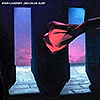 Dreams may be absent from Evan Caminiti’s somnolent vision, but activity certainly isn’t. There are soft ambient trappings to many of the tracks, yet while Caminiti sometimes lets them play out, more often than not he shakes them up, introducing structural shifts, timbral expansions or, most often, an angular melodic forefront (usually in the form of a overdriven guitar). Gratifyingly heavy textures, they envelop the listener, creating an intoxicating and deliciously soporific atmosphere.
Dreams may be absent from Evan Caminiti’s somnolent vision, but activity certainly isn’t. There are soft ambient trappings to many of the tracks, yet while Caminiti sometimes lets them play out, more often than not he shakes them up, introducing structural shifts, timbral expansions or, most often, an angular melodic forefront (usually in the form of a overdriven guitar). Gratifyingly heavy textures, they envelop the listener, creating an intoxicating and deliciously soporific atmosphere.
[Experimedia | Boomkat]
7 | iamamiwhoami – kin
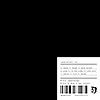 Jonna Lee’s first album as iamamiwhoami has been a long time coming, preceded by several years of fascinating self-contained video and audio works. This extensive series of overtures finds a place of commonality in kin, which is surely one of the most astonishingly self-assured and innovative debuts of recent years. Songtronica has effectively been reinvented in this album, making Jonna Lee to the 2010s what Björk was to the 1990s. If that sounds like a lot to live up to, these nine tracks surpass all expectations; kin is nothing less than a revelation.
Jonna Lee’s first album as iamamiwhoami has been a long time coming, preceded by several years of fascinating self-contained video and audio works. This extensive series of overtures finds a place of commonality in kin, which is surely one of the most astonishingly self-assured and innovative debuts of recent years. Songtronica has effectively been reinvented in this album, making Jonna Lee to the 2010s what Björk was to the 1990s. If that sounds like a lot to live up to, these nine tracks surpass all expectations; kin is nothing less than a revelation.
[To Whom It May Concern]
6 | Monty Adkins – Four Shibusa
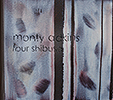 Reviewed earlier this month, Adkins’ latest album continues his work arising at beautiful, sheer surfaces. The Four Shibusa are put together with tremendous care and a great deal of extra-musical consideration, tapping into the aesthetic characteristics of its Japanese inspirational origins. Ambient music at its most exquisite.
Reviewed earlier this month, Adkins’ latest album continues his work arising at beautiful, sheer surfaces. The Four Shibusa are put together with tremendous care and a great deal of extra-musical consideration, tapping into the aesthetic characteristics of its Japanese inspirational origins. Ambient music at its most exquisite.
[Audiobulb | Boomkat]
5 | Edward Ka-Spel – Ghost Logik & This Saturated Land
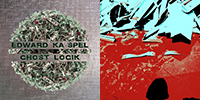 Perhaps by now no-one should be surprised at Edward Ka-Spel producing two outstanding albums in a single year (as it is, he’s brought out three others in 2012 that i haven’t yet heard, so for all i know there may be more). The latter is a lengthy five-part exercise in textures fashioned from drones, electronics and field recordings—nothing terribly noteworthy about that, but the subtlety of Ka-Spel’s work is breathtaking, and his ability to keep sounds just beyond the point of recognition is magnificent. The former album is even more impressive, expanded by vocal layers (sung and spoken) and an astonishing bonus disc featuring four ‘Spectrescapes’ that tip everything into ineffable territory.
Perhaps by now no-one should be surprised at Edward Ka-Spel producing two outstanding albums in a single year (as it is, he’s brought out three others in 2012 that i haven’t yet heard, so for all i know there may be more). The latter is a lengthy five-part exercise in textures fashioned from drones, electronics and field recordings—nothing terribly noteworthy about that, but the subtlety of Ka-Spel’s work is breathtaking, and his ability to keep sounds just beyond the point of recognition is magnificent. The former album is even more impressive, expanded by vocal layers (sung and spoken) and an astonishing bonus disc featuring four ‘Spectrescapes’ that tip everything into ineffable territory.
[Ghost Logik: Rustblade | This Saturated Land: Bandcamp – free download]
4 | Jakob Ullmann – fremde zeit addendum
 Jakob Ullmann’s is a liminal music, positioned at the threshold of audibility. This has the effect of inducing a peculiarly intense kind of listening (best accomplished with headphones and closed eyes) where one’s hearing feels sharpened, and where even the slightest of sounds becomes significant. It takes some time before the realisation hits that it’s practically impossible to identify the source of these sounds, despite knowing their acoustic origins. This 3-CD release contains four large works of Ullmann, all hovering around silence. The tension and the growing sensation of wonder are palpable and utterly profound.
Jakob Ullmann’s is a liminal music, positioned at the threshold of audibility. This has the effect of inducing a peculiarly intense kind of listening (best accomplished with headphones and closed eyes) where one’s hearing feels sharpened, and where even the slightest of sounds becomes significant. It takes some time before the realisation hits that it’s practically impossible to identify the source of these sounds, despite knowing their acoustic origins. This 3-CD release contains four large works of Ullmann, all hovering around silence. The tension and the growing sensation of wonder are palpable and utterly profound.
[Edition RZ]
3 | Black Swan – Heaven
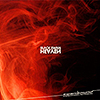 The Black Swan approach to audio has always been to stretch it, bleach it, blanch it, cake it in mould and then subject it to merciless scrutiny. Never have they done this more effectively than in the eight parts of Heaven, where the signal to noise ratio is frequently ambiguous to the point that the ear loses its grip on what matters most. That’s not to suggest there isn’t any substance; quite the opposite, in fact: even as the album grows in obfuscation, the sense that there is something buried beneath the grime is always overwhelmingly present. Black Swan’s ongoing genius is in the way they sharpen perceptions and widen one’s understanding of what constitues sonic meaning.
The Black Swan approach to audio has always been to stretch it, bleach it, blanch it, cake it in mould and then subject it to merciless scrutiny. Never have they done this more effectively than in the eight parts of Heaven, where the signal to noise ratio is frequently ambiguous to the point that the ear loses its grip on what matters most. That’s not to suggest there isn’t any substance; quite the opposite, in fact: even as the album grows in obfuscation, the sense that there is something buried beneath the grime is always overwhelmingly present. Black Swan’s ongoing genius is in the way they sharpen perceptions and widen one’s understanding of what constitues sonic meaning.
[Swan Plague | Bandcamp]
2 | Richard Barrett – Dark Matter
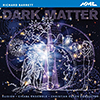 A rare excursion for NMC Recordings into the domain of the genuinely avant-garde, this is one of the most dazzling displays of contemporary music ever recorded. Dark Matter is Barrett’s most immersive and coherent cycle since Opening of the Mouth, putting to bed (and, one hopes, to death) the pervading myth put about by third-rate pundits that his music is ‘impenetrable’. On the contrary, one can hardly imagine music more immediate than this, gripping, disorienting and frequently very moving indeed. But of equal stature is the peerless rendition of the music given by members of the Elision and Cikada ensembles. It practically defies belief to hear Barrett’s music—or, indeed, any music—played with such unshakeable conviction and commitment. A masterpiece.
A rare excursion for NMC Recordings into the domain of the genuinely avant-garde, this is one of the most dazzling displays of contemporary music ever recorded. Dark Matter is Barrett’s most immersive and coherent cycle since Opening of the Mouth, putting to bed (and, one hopes, to death) the pervading myth put about by third-rate pundits that his music is ‘impenetrable’. On the contrary, one can hardly imagine music more immediate than this, gripping, disorienting and frequently very moving indeed. But of equal stature is the peerless rendition of the music given by members of the Elision and Cikada ensembles. It practically defies belief to hear Barrett’s music—or, indeed, any music—played with such unshakeable conviction and commitment. A masterpiece.
[NMC]

1 | Kreng – Works for Abattoir Fermé 2007 – 2011
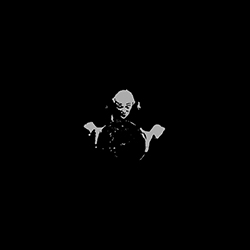 Wow. Just wow. Pepijn Caudron’s work as Kreng over the last few years—the Pleiades and Zomer EPs and particularly L’Autopsie Phénoménale De Dieu and last year’s Grimoire—have indicated a composer travelling into the kind of soundworlds few have ventured before. But who could have seen this massive black celebration coming? The album brings together over three hours of music Caudron created for performances by the Belgian theatre group Abattoir Fermé, and one can only imagine what the material on stage must have comprised. Except one hardly needs to imagine, such is the overwhelming force and vividity of the music.
Wow. Just wow. Pepijn Caudron’s work as Kreng over the last few years—the Pleiades and Zomer EPs and particularly L’Autopsie Phénoménale De Dieu and last year’s Grimoire—have indicated a composer travelling into the kind of soundworlds few have ventured before. But who could have seen this massive black celebration coming? The album brings together over three hours of music Caudron created for performances by the Belgian theatre group Abattoir Fermé, and one can only imagine what the material on stage must have comprised. Except one hardly needs to imagine, such is the overwhelming force and vividity of the music.
Fittingly, there’s a dramatic sequence of sorts in the way the four works (each with two parts) are presented. ‘Tourniquet’ is more-or-less immobile, protracted obscure chord progressions its only material, pivoting nervously above a rumbling bottomless pit. Clarity comes in the end, and with it lengthy stases underpinned by busy drumwork and soundbites of courage from anonymous evangelists. ‘Mythobarbital’ rouses itself into a numb funereal stupor, like someone exhaustedly dragging themselves to the gallows. Strange loops of a pleasant (but in this context sinister) melody can be heard afar off, leading to a weird, wheezing chamber music. Its woebegone character blossoms into a doleful brass episode that subsides in intense throbbings and the numinous effect of almost inaudible sound everywhere. ‘Snuff’ introduces the first real energy, delivered in rousing blasts of melancholic marches and impossibly growling baroque laments, encased by hauntological artefacts and yielding to yawning contrabassoon intonations and fretful breath sounds. Finally, ‘Monkey’ withdraws to the shadows once more, clouds of low piano resonance dissolving into a cavernous, indistinct droning, somewhere between consonance and dissonance. Slowly it attains the solemnity and stature of a rite, interrupted at the start of the second part but climaxing in horribly unsettling music, like wild sawing. The way this subsides into an exquisite calm only makes things sound more troubling, before Caudron takes the music to the brink of insanity, concluding like a Gaspar Noé film, with spinning dance beats from the mouth of hell.
Works for Abattoir Fermé 2007 – 2011 is like an epic, aural account of delirium tremens, every second of which is a bewitching, unexpected, unexplainable mystery from which one simply cannot turn away. Amazing.
[Miasmah | Boomkat]

[…] Ullmann. Including the outstanding fremde zeit addendum 3CD boxset of his music near the top of my 2012 Best Albums list wasn’t just an act of fitting celebration but also of defeat; the bland paragraph i wrote to […]
[…] from Kreng (out on Miasmah), whose astonishing Works For Abattoir Fermé 2007–2011 topped my Best Albums of 2012 list. While The Summoner steps back from the overt theatricality of that previous release, […]
[…] set compiling his work for the eponymous surrealist theatrical troupe. It subsequently became my best album of 2012, and led me to investigate his earlier work, including a pair of EPs dating from the same time […]